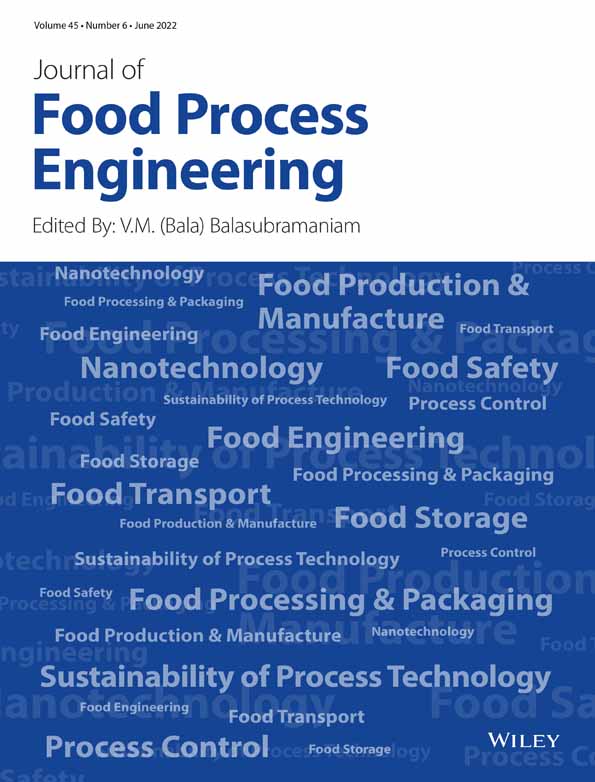Modeling of process parameters to predict the efficiency of shallots stem cutting machine using multiple regression and artificial neural network
Abstract
The shallot stem cutting machine process parameters were optimized and analyzed to develop predictive models for predicting the efficiency of the machine for scale up process. The efficiency of the machine was above 90%. Influence of peripheral speed of the rollers and inclination angle of the rollers on efficiency was determined and models were developed using multiple linear regression and artificial neural network (ANN) models. The coefficients of multiple linear models were estimated and the equations were constructed. A two-layer neural network consists of eight neurons in hidden layer and one neuron in the output layer was established. The models were validated and their performance was assessed using statistical parameters like R2, adjusted R2, and root mean square error values. R values of ANN model's training, testing, and validation were .998, .990, .998, and .996, respectively. R2 values of multiple linear regression analysis ranged from .618 to .722 and .992 for ANN model. The developed models have minimum mean square error of 0.47, 0.13, 0.59, 0.58, and 0.77 for multiple regression models and 0.208 for ANN model. The degree of fitting between estimated and predicted values was described using bias factor ranged from 0.99 to 1.02. The comparison plots of actual efficiency versus predicted efficiency showed that the machine efficiency predicted by ANN model was in good agreement with actual efficiency. Hence, the results concluded that the ANN model is more suitable for predict the efficiency of shallot's stem cutting machine.
Practical Applications
Processing of onion at industrial scale is very essential to ease the process of preparation of dishes at household. The shallot onion stem cutting is part of the unit operation involved in onion processing. A stem cutting machine was designed, developed, and process parameters were optimized. Mathematical model was developed to predict the efficiency using multiple linear regression and artificial neural network. The models will be used for developing automatic industrial scale machine.
CONFLICT OF INTEREST
The authors declare no potential conflict of interest.
Open Research
DATA AVAILABILITY STATEMENT
Data sharing is not applicable to this article as no new data were created or analyzed in this study.




